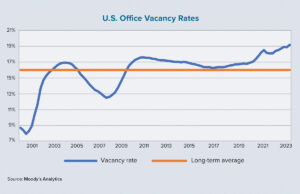The rise of inexpensive capital sources in recent years, coupled with burdensome regulations in conventional loan underwriting brought about by the Great Recession, created new opportunities for private lenders to fill the resulting economic void. Borrowers with an entrepreneurial mindset have always used private lenders to fund projects that banks would not touch or could not close expeditiously enough.
As the use of private money has expanded over the past decade, newly formed companies came to the table to meet the needs of this growing sector. Fast forward to 2020 when the COVID-19 pandemic hit. To counteract the effects of the ensuing economic crisis, federal monetary policies perpetuated an unchecked buildup of liquidity in the markets due to COVID relief funds. The Federal Reserve lowered benchmark interest rates to near zero. And private lenders backed by large hedge funds accessed sizable low-rate credit lines.
“Typically, title insurance is mandated by banking regulators and it is a requirement if the loan is sold to investors on the secondary market.”
Aggressive standards
Eager to deploy historically low-cost capital into higher-yield loans, lenders pushed billions of dollars into the market via lenient lending standards and higher leverage ratios. Conventional lenders still needed to adhere to federally regulated lending practices, but private money was not bound by these same statutes.
There was more money in the system than there were sensible deals that required private capital. Hence, the industry adopted more lenient underwriting standards. Private lenders pushing higher leverage allowed more money to be moved.
The result was that many individuals borrowed beyond their carrying capacity and properties were leveraged beyond traditionally cautious private money underwriting standards. Loans were created that would have been previously unrealized and aggressive lending practices created little margin for error. These new “volume-focused” lending practices required a continual increase in asset prices to be sustainable.
Enter the market shift. The Fed has pivoted to reduce inflationary pressures by increasing the prime interest rate. Money that was deployed at low interest rates is now creating a strain for credit line-based lenders whose capital costs have significantly increased.
As borrowing costs for consumers and businesses have increased, asset prices have declined to match the reduced purchasing power. The individuals and businesses that took out high-leverage, short-term loans at yesterday’s low interest rates are finding that extension options are not readily available. This is due in part to leveraged private lenders that don’t have the capacity to extend.
Return to normalcy
Today’s lenders are requiring significant cash to be brought to closing to make the numbers work in the current reality. Existing loan structures often do not meet stricter underwriting practices and valuations.
Here is an example. In January 2022, an individual obtained a 12-month loan with an 80% loan-to-value ratio on a rental home in a major West Coast city from a private lender that obtains financing from an East Coast-based hedge fund. The loan had an attractive rate and required only a 20% downpayment. The deal allowed the borrower to purchase the property at a cost of $1 million.
Fast forward to January 2023. The balloon payment was due and the private lender was unable to extend the 12-month term. The lender’s hands were tied because its source of capital needed the cash back immediately.
In pursuing alternatives, the borrower sought private lenders with stable sources of capital. The conundrum was that the borrower obtained a loan of $800,000 on a property that by 2023 was worth $800,000 in the current market. The most plausible option available on a short-term bridge loan was 70% of the current property value at a considerably higher rate than before. This equated to a $560,000 loan with the client needing to bring $240,000 to closing.
This scenario is one of many that is manifesting daily. It is the reality of 2023. Lending practices will continue to be more prudent and durable during this market correction. Cautious underwriting practices that governed private money in the previous decades are coming back. Over time, this will lead to a more stable and consistent private lending environment. And this transition will create numerous opportunities for commercial mortgage brokers and entrepreneurs.
Saving balloons
In the coming months there will be a meaningful number of loans with balloon payments that will require action to stave off becoming distressed assets. Mortgage brokers may find it fruitful to focus on finding short-term loans that are maturing. Many of these loans can be broken down into two scenarios.
The first is one where the borrower becomes overleveraged and needs to liquidate their holdings. This will bring opportunity for a savvy entrepreneur to purchase an asset at a favorable price. In turn, it will offer a new business opportunity for a mortgage broker to work with a bank or a private lender on the origination of a new loan.
The second scenario involves a borrower who can rightsize the loan through cash and collateral, allowing new funding to be executed. In these cases, creative private lenders can find solutions to cross-collateralize and originate a loan.
In both scenarios, mortgage brokers can build durable, long-term relationships with new clients, offering value and practical help to resolve a tough situation. Finding solutions for clients in these predicaments will help to build a brand and reputation that will outlast the current lending cycle.
Borrowers can save their investments and eventually complete a sale on their own terms. Many believe that interest rates will stabilize and potentially improve this year. Historically, asset values have bounced back and increased over the long term.
New opportunities
These scenarios illustrate opportunities for brokers to expand their businesses at a time when loan origination activity is scarce. With the rise of short-term loans in the past few years, maturing loans will be coming down the pipeline and borrowers will need professional guidance.
When seeking short-term solutions from private money lenders, be sure to practice due diligence. Brokers and borrowers should investigate private lenders and know the answers to certain questions, such as:
- What is the lender’s source of capital?
- Do they have discretionary control over their funds?
- How long have they been in business?
- Do they retain and service their loans or sell them upon closing?
As the market continues to shift, it is imperative that commercial mortgage brokers and borrowers work together to find solutions to everyone’s benefit. The current year will bring about many challenges mixed with many opportunities. Transactional volume will likely remain lower for the foreseeable future, but there will always be potential business for brokers and entrepreneurs who understand the market and seek funding the right way. ●
Author
-

Chris Stafford is the business development officer at Seattle Funding Group, which is an unleveraged private money lender. Since 1988, Seattle Funding Group has been providing short-term real estate-backed debt capital on investment properties throughout the Western U.S. Reach Stafford at (425) 455-1733.





